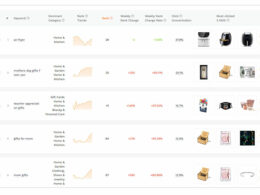Steps to Ensure the Safety of Business and Customer Information

Amidst the rapid evolution of technology, businesses face an unprecedented challenge: ensuring the safety of both their proprietary data and the sensitive information entrusted to them by their customers. In an age where digital breaches can spell disaster for companies and erode consumer trust, safeguarding this information is paramount. To navigate this landscape successfully, organizations must adopt robust strategies that prioritize security at every level. From employing cutting-edge encryption methods to fostering a culture of awareness among employees, there are several crucial steps businesses can take to fortify their defenses and protect the integrity of their data assets. Let’s delve into these essential measures that underpin the security of business and customer information.
Understanding Data Masking
Data masking, also known as data obfuscation or anonymization, is a technique used to conceal sensitive information within a database or data storage system. It involves replacing original data with fictitious, but realistic, data while preserving the data’s format and function. This allows organizations to use the data for testing, development, or analytics without exposing sensitive information to unauthorized parties.
Steps to Ensure Information Safety
- Comprehensive Risk Assessment: Begin by conducting a thorough risk assessment to identify potential vulnerabilities and risks to your business and customer data. This assessment should encompass all aspects of data storage, transmission, and processing.
- Data Classification: Classify your data based on its sensitivity and criticality to the business. Not all data requires the same level of protection, so understanding which data is most valuable and sensitive is essential for prioritizing security measures.
- Implement Encryption: Encrypting data both at rest and in transit adds an extra layer of security, making it more challenging for unauthorized users to access or intercept sensitive information.
- Access Control and Authentication: Implement strict access controls and authentication mechanisms to ensure that only authorized personnel can access sensitive data. This includes strong password policies, multi-factor authentication, and role-based access control.
- Regular Security Updates and Patches: Keep all software, applications, and systems up to date with the latest security patches and updates. Vulnerabilities in outdated software can be exploited by cybercriminals to gain unauthorized access to your systems.
- Employee Training and Awareness: Train employees on security best practices and raise awareness about the importance of data protection. Human error remains one of the leading causes of data breaches, so educating employees can significantly reduce the risk of security incidents.
- Data Backup and Disaster Recovery: Implement a robust data backup and disaster recovery plan to ensure that critical business and customer information can be quickly restored in the event of a data breach or system failure.
- Regular Security Audits and Testing: Conduct regular security audits and penetration testing to identify and address any vulnerabilities in your systems before they can be exploited by attackers.
The Role of Data Masking
Data masking plays a crucial role in safeguarding sensitive information, particularly in non-production environments such as development, testing, and analytics. By masking sensitive data, organizations can minimize the risk of exposing confidential information to unauthorized individuals while still maintaining data realism and integrity for various purposes.
For example, in a software development environment, developers may need access to production data to test new features or troubleshoot issues. However, exposing real customer information in a non-production environment poses significant security risks. Data masking allows organizations to replace sensitive data such as Personally Identifiable Information (PII) or financial data with fictitious but realistic values, ensuring that developers can work with representative data without compromising confidentiality.
Similarly, in data analytics and business intelligence projects, analysts often require access to large datasets for trend analysis, forecasting, and decision-making. By masking sensitive information within these datasets, organizations can protect customer privacy and comply with data protection regulations such as GDPR or HIPAA while still deriving valuable insights from the data.
Conclusion
By following these essential steps, businesses can strengthen their security posture and safeguard both their own and their customers’ information against potential threats and vulnerabilities. Prioritizing data security not only protects sensitive information but also enhances trust, credibility, and reputation, ultimately contributing to long-term success and sustainability.
- Streamline Data Access with JavaScript’s for-in Loop - May 19, 2024
- Master Your Build: Essential Java Build Tools - May 19, 2024
- Stay Connected With Messaging and Chat Apps Like Messenger - May 18, 2024








